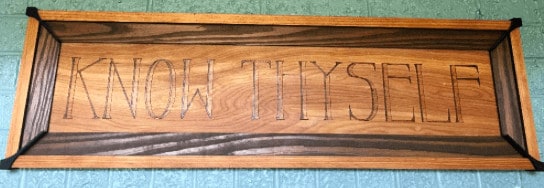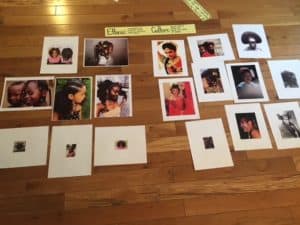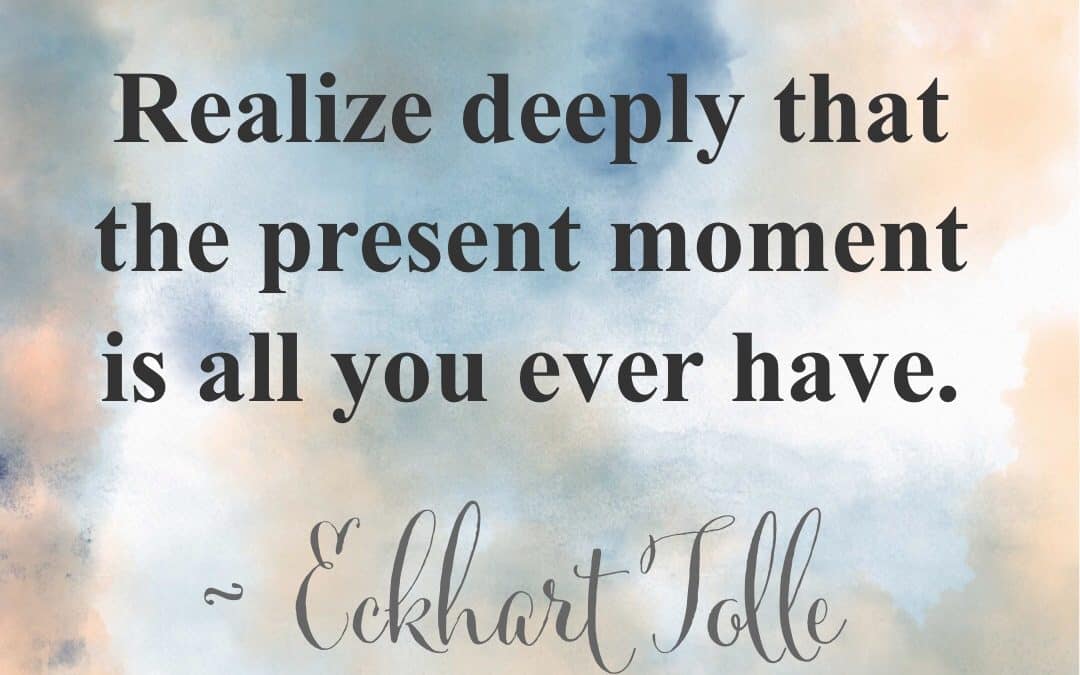
by West | Jun 19, 2018 | News
Rites of passage are important, sacred ceremonies that highlight a transitional period in a person’s life.
In many cultures, tribes and soceities around the world, children engage in various rites of passage. Often these are times when a child is recognized for passing though the threshold toward adulthood. Graduation at Rainbow Community School serves as an integral rite of passage for our graduating Omega Middle Schoolers.
Preparation for this rite officially begins as they join the Omega program. Subtle and more obvious practices support each Omegan’s readiness. For example, each day that middle schoolers pass through a physical threshold. As enter the building, they pass under a wooden panel inscribed with “Know Thyself.” Additionally, their arrival is also marked with a sacred time called Centering; this time is used for grounding, centering, pondering life’s big questions. Lessons, activities and learning experiences throughout the day not only foster a culture of connectedness but support the work of nurturing the child to individuate- to
Know Thyself.
These opportunities, although grounded in the safety of community, encourage personal identity development, person spirituality and ultimately- wholeness. According to decades of research by Dr. Lisa Miller, head of clinical psychology at Columbia’s Teachers College, teens who have the benefit of developing a personal spirituality are 80% less likely to suffer from ongoing and recurring depression and 60% less likely to become substance abusers. To that end, it is reasonable to suggest that spirituality is indeed the cornerstone for mental health and human well-being. Intentional rites of passage are but one way to nourish that health.
To KNOW THYSELF is to answer these questions:
Who am I?
Who are you?
Why am I here?
What is my purpose?
Graduating Omegans write commencement speeches that reflect on their time at Rainbow and acknowledge their gratitude, growth, challenges, hopes and dreams. Each student, as part of the rite, share these speeches publicly. This public sharing is an amazingly brave yet vulnerable challenge.
But more importantly, the words of wisdom spoken by these young adults are nothing less than profound.
They are informed by years of social, emotional and spiritual engagement and learning. They are guided by opportunities to explore life’s big mysteries and ponder personal purpose. They are rooted in a a collective AND personal identity.
If you are curious what happens when soul is invited into the classroom, please click here to listen to Noah Mraz’s graduation speech.
Please also consider:
- What are the implications of integrating rites of passage, existential questioning and the spiritual domain into your own work with children?
- What are you already doing that serves the spiritual development of your students? What more can you do?

by West | May 19, 2018 | Blogs, Home Page News, Rainbow Institute
The integrated RCS curriculum fosters learning in a holistic way.
This approach is void of the restrictions often imposed by teaching discreet subjects. Purposeful integration acknowledges, builds on and reinforces the existing relationships between subject areas and/or topics. The hope is that learning is then more easily transferred into other settings.
Integration is also a “brain compatible strategy” as described by brain researcher, Eric Jenson. Jenson (1996) suggests that, “The brain learns best in real-life, immersion-style, multi-path learning [and] fragmented, piecemeal presenting can forever kill the joy and love of learning.” This immersion style is considered a best practice and is embraced by our teachers. It is, therefore, not uncommon for the theme, topic or unit of study to be woven into the fabric of an entire school day, week, and/or month. For example, the element of water and its states of matter are introduced in kindergarten. First grade elaborates on the water cycle and studies rivers and oceans. During these units, water often becomes a central theme that invites cross curricular learning.
Centering offers cross curricular learning opportunities.
The intended purpose of centering is to awaken the spiritual center of each child, opening pathways to learning. The centering practice activity includes a contemplative experience, but teachers also strive to extend the learning by integrating with the academic curriculum. The Mind Jar centering serves as an excellent example. The Mind Jar begins with a conversation about the various properties of water. Perhaps prompted by photographs of water in various forms or by a book such as, The Water Dance by Thomas Locker. Discussion yields a shared understanding of the ways in which water moves- Water is always moving, flowing, changing, essential to life, found deep in the ocean, under the ground, high in the sky, freezing, melting, etc. The focus being more heavily on the magical and mysterious qualities of the element rather than the scientific descriptions.
The teacher guides students to make connections between their own thoughts and feelings to the movements of water in the natural world
(i.e. a raging river can represent anger, a waterfall- excitement, snowfall- peace) After giving an example or two, the children are then prompted to suggest additional feelings and water movements connections. The teacher explains that The Mind Jar is simply a jar filled with water and glitter. But it is representative a tiny world where we can watch the movements of water and match those movements to our own feelings. The water represents our mind’s natural state and the glitter represents our thoughts, emotions, fears, concerns, and wonderings. When the jar is shaken, our thoughts will whirl around and our mind becomes cloudy and hard to see through. But, as the glitter begins to settle and still, so do our thoughts and feelings. It is in this stillness and calm state that we are able to make good decisions.
The Mind Jar is a simple mason jar containing water, glitter, glitter glue, and food coloring.
Combine warm water with the glitter glue, glitter, and food coloring. Close the Jar tightly. Depending on the amount of glue you use, the glitter will settle more slowly. This tool can be used when a child is feeling stressed, overwhelmed or upset. It can calm and relax them. It can serve as a meditation tool or a self-regulation tool. You can explore many versions of this on the web. If you have an interest in extending the learning from this centering, you may want to try a follow up centering using the picture book, Moody Cow Meditates. Peter the cow is moody after having a rough day. A series of unfortunate circumstances leads Peter’s grandfather to teach him how to settle his mind and let go of his frustration using some mediation tools.

by West | Mar 8, 2018 | Blogs, Home Page News, Rainbow Institute
We live in a time of uncertainty, in a world that is unpredictable and in a society that is, in some cases, changing rapidly and in others stuck. Nevertheless, our work as educators is more important now than ever.
As an organization, we aim to live our mission everyday. Some days we do so effortlessly and seamlessly. Other days we detour, stumble and struggle. Many days yield cheer and celebration, yet many yield mistakes and misunderstanding. Regardless of the outcomes, we see them ALL as an opportunity to deeply reflect, adapt and grow.
We are an organization on a transformational journey informed by these opportunities, guided by our hearts and our spirits and fueled by our mission.
We develop accomplished, confident, and creative learners who are prepared to be compassionate leaders in building a socially just, spiritually connected, and environmentally sustainable world.
As a teacher, to live this mission means that you are intentional about circling back to it and that you are willing to hold a mirror up to your classroom culture and programming. These opportunities often show up in unexpected ways but, if you are waiting with that mirror, some amazing learning can happen.
Spirit Week at RCS
Next week is Spirit Week at RCS. This week fills our school classrooms, campus and culture with fellowship and fun. It invites costumes, and creativity while building community. As Student Council began to flesh out the daily Spirit Week themes, they stumbled on an opportunity- a real teachable moment. In an effort to give this teachable moment greater context, our Equity Director wrote a letter to our families.
“In the interest of our ongoing efforts to be more mindful of equity, we are eliminating ‘Crazy Hair Day’ from our Spirit Week schedule. There are a couple of concerns about this practice. To begin with, the regular and loose use of the term ‘crazy’ is disrespectful to those who live and struggle with mental illness. Even if we are innocently using the term to refer to something that is different and/or weird, we need to ask ourselves if that’s really the message we want to send about hair. While there are some really cute and elaborate ideas out there for ‘Crazy Hair Day’, all too often, the expressions that come out of this Spirit Week practice are styles that closely resemble (intentionally or not) actual cultural and ethnic hairstyles. The suggestion that those styles are crazy or weird is offensive. Would it be ‘crazy hair’ if a child with curly hair came to school with their hair straightened for the day?
Here at Rainbow, equity is a practice. So we’re using this as a teachable moment for our students. Some of your teachers are taking this time to talk about culture and cultural practices, and concepts of ‘different’ vs. ‘weird’. If you want to continue these discussions at home and feel like you could use some supportive material, please reach out to our Equity Director. In addition, HERE is a link to a very thoughtful post from a parent about ‘Crazy Hair Day’.
Teachable Moments
This topic became inspiration for a 4th grade centering practice. Centering began when the class found stillness and silence. The candle was then lit for “safety” and the teacher began, “Yesterday we talked about physical safety and today we will talk about emotional safety.”
Susie, the teacher, followed by asking for a volunteer to read Rainbow’s mission statement. She then asked, “Where does this come from?” The kids responded, “The School!” She explained that this was our mission statement and ultimately our hope for each action, every day.
Around the altar were the words Ethnic and Culture. The teacher asked the students what these words meant to them. As a group, the kids built collaborative definitions and came to some common understandings of each word. Susie then revealed a final sheet of paper with the phrase ‘Crazy Hair Day’ written on it and began touching on some of the concepts that were explained in the above letter. Finally, she began showing the group images of hairstyles that were based on the cultural or ethnic backgrounds of the people pictured.
These images were passed around the circle in silence. The students were asked to simply use their powers of observation, acknowledge any reactions, consider the terms ‘ethnic’ and ‘culture’ while making mental notes as they cycled through each image.

In closing, Susie asked to kids to try to weave all the centering elements together and identify the message that she was trying to share with them. One child responded,”By saying something or someone is crazy, you are judging them.” Another student said, “The things that may be fun for me, like crazy hair day, could really hurt someone else. This might be the way they do things and if you make fun of them, it could hurt their feelings.” Another child said, “What you might consider crazy hair for you may be they way that others wear their hair everyday.” One noted that, “Yesterday we talked about how some cultures greet people in different ways we should think about how some people wear their hair in different ways.” Susie ended with a simple statement about how we, for the last several years have been hosting Crazy Hair Day and upon reflection and insight we have realized that this choice does not fit within our mission statement. As a community, we decided to let go of it because we strive for emotional safety for all.
Now what?
Consider your personal mission statement or that of your school or organization. Reflect…
What are you doing to successfully achieve this mission? Celebrate that!
Now consider, how can those mission statement words be better represented with action?
What changes to your direct practice can open up pathways of learning for you, your family and/or your students?

by West | Jan 30, 2018 | Blogs, Home Page News, Rainbow Institute
Teaching thematically
Integrated thematic units are considered best practice at Rainbow. Thematic lessons are layered in both discipline and in learning domain. Layering in this way encourages theme engagement from many angles and through many lenses. This allows a student to connect with the material through their preferred learning domain while nurturing a lasting relationship with the material. For example, what is taught in science may be incorporated into the social studies topic, written about in language arts, or read through literature. This method nurtures learning that is both circular and interconnected.
First grade is currently studying Africa. A recent centering lesson was layered in mindfulness and contemplative ritual, kinesthetic learning, teamwork and critical thinking. It was also rooted in the geography, natural history and culture of Africa.
The centering begins, like all RCS centerings, with a prompt to, “still your minds, bodies and voices and at the sound of each chime, take three audible deep breaths.” Josie, the teacher, then asked the class Mindful Mediation Leader to offer a word or intention that we can hold in our hearts. “African animals” was offered and Josie struck a match and said, “may we honor African animals as our teachers.”
These rituals served to shift the class energy inward resulting in a moment of silence and stillness. Josie then showed a picture of the Efé children of the Zaire, Ituri Forest and asked contemplative questions.
“What do you see, think and wonder about this picture?”

The Osani Circle Game
Josie explained that these children were playing a game called The Osani Circle Game. This prompted a conversation about circles. She stated that circles and cycles are seen everywhere. They are symbols of connection and wholeness. They are considered incredibly strong. Josie asked, “Can we name some circles or cycles?”
She went on to describe that the players of the game harness the strength of the circle by physically creating a circle with their feet and bodies. Each person then takes a turn naming a circular object, concepts or cycles such as apples, belly buttons, pies, time, the water cycle, butterfly cycle, the seasons. The goal being to hold the circle throughout the game while, without hesitation, naming circular objects.
In an effort to anchor the kids in teamwork, set the tone for the game and harness the power of the circle, Josie started by sending a “squeeze around the circle.” She then led them to create a human mandala. Finally, she guided them through a closed-eyed medication that allowed them to picture the circles all around us.
The kids named things like the butterfly cycle, the Sun, the belly of a bear, our noses, etc… More importantly they had fun while learning in a rich and integrated way- from learning about Efé children, to physically and collaboratively recreating the circle, to thinking fast and maintaining concentration throughout the game.
However, it was the unwritten curriculum that spoke volumes- the wisdom of the circle. The circle as a powerful symbol has been referred to since the beginning of time. It is celebrated in many religions and cultures as divine. It holds archetypal influence in story and myth and is represented by so many natural phenomena. Consider the Tibetan mandala, the Native American medicine wheel, the wedding ring, the Hero’s Journey, the Sun or Moon cycle. This centering ended with a closing verse that integrated some important circular objects found in our lives.
Informing your practice
If children are deeply and comprehensively connecting to the Circle, then they are more likely to return to it later in life as a teacher or guide, a tool, a strategy, an anchor or a healing source. I ask you to consider how circles show up in your life, to pay attention to their influence, and to invite them in as teachers.

by West | Oct 30, 2017 | Blogs, Home Page News, Rainbow Institute
The centering rituals, although all rooted in mindfulness and in sacred spirit, vary from Rainbow classroom to Rainbow classroom. For example, the middle school, known as Omega, opens each centering with a reflection on a quote, a lyric, or a blessing. As centering opens, the students turn inward by recording the quote, which is displayed on a whiteboard, in their centering journals and connect with it through silent reflection.
This daily “food for thought,” sets a reverent tone, encourages contemplative thinking, nourishes class coherence while reminding us that learning is scared. A volunteer is asked to recite the quote and then the facilitator fishes for any reflections, questions, insight or comments. Students are encouraged to offer their own wisdom, tweeze out meaning, make connections, share personal stories, and/or give an emotional reaction to the quote.
On one particular morning, Freddie, an eighth grade student lead a centering inspired by the words of spiritual teacher, Eckhardt Tolle,
“Realize deeply that the present moment is all you ever have.”
Freddie paused after the quote and waited for responses. One student offered, “that we are often caught up in our past memories and mistakes or are thinking about what will happen next, that we dont realize the important things that are happening right in front of us.” Another student responded with “the past is full of memories, the future of hopes or dreams and the present- the present is where the two collide. It is important to savor that.”
Interacting with students in this way, keeps me in constant awe of the wisdom that is alive within them. What if every child had the opportunity to be contemplative, like this, each day? How would their inner potential and their inner wisdom reveal itself?
After a round of sharing, Freddie attempted to put the quote’s wisdom into practice. He asked that we each find a comfortable position somewhere in the classroom, close our eyes, and begin to focus on our breath. He began to ring a bell and noted that the bell would serve to anchor the breath. He said that if our thoughts wandered or drifted, each time he rang it, it would remind us to come back to our breath and to the present moment.The students seemed to relax into the meditation with ease and Freddie held space for this practice for about five minutes. Each individual student emerged from the practice relaxed, calm and focused and the group’s energy seemed more bonded or in a higher state of flow.
Overall, I feel that the mediation succeeded in supporting the transition from home to school, supporting class coherence and in opening up additional pathways to learning.
Meditation is one crucial tool that our children access…it allows them to focus on their breath, their bodily sensations, or on a word or phrase. In today’s fast paced society, it has become increasingly challenging to direct attention or efforts to a single point of reference or action. Alarms, meetings, deadlines, chores, commitments and to do lists can make it hard to embrace a mindfulness practice, a mediation or any deep relfection. A mediative practice, like the one described above has the power to turn attention away from distracting thoughts, past memories, mistakes or regrets, or future obligations and into the present moment. It is not only empowering but powerful.
What if alarms were used to remind us to be present, to pause, to notice- instead of to wake us up or get us somewhere on time? What if our to do lists became to be lists? What if every child was equipped with these tools and resources? What if…















